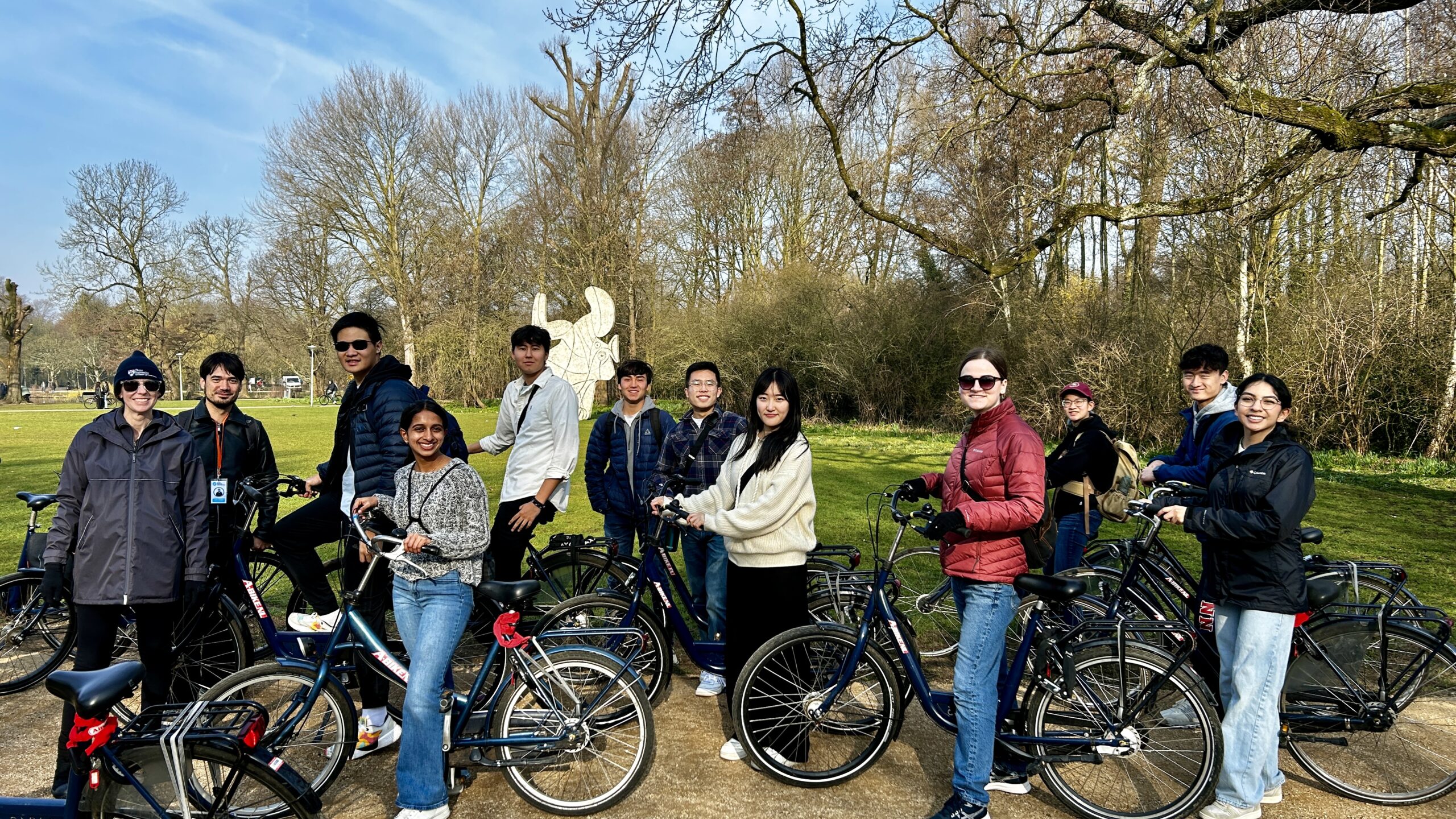
In the Netherlands, the Bike Leads
Cycling through Vondelpark, the largest city park in Amsterdam.
PGS: Bicycles: The Mechanical Advantage
Max, one of the Penn Global Seminar Correspondents, shares his experience abroad during the Spring 2025 semester. Follow along with the group of correspondents on our blog and look out for their images on the @pennabroad Instagram feed.

After a week in the Netherlands with the Penn Global Seminar Bicycles: The Mechanical Advantage, I came home thinking less about the gears and mechanics of a bike and more about what it means to build a world that’s truly people-first.
This wasn’t your typical engineering course. We spent the semester learning about the mechanics of bicycle design, from force analysis and material trade-offs to fabrication methods and sustainability. But all of that came alive when we stepped into Amsterdam. Nothing beats seeing the theory in motion, quite literally, as thousands of cyclists zipped past us with effortless coordination. Families, commuters, delivery riders, everyone moved in harmony.
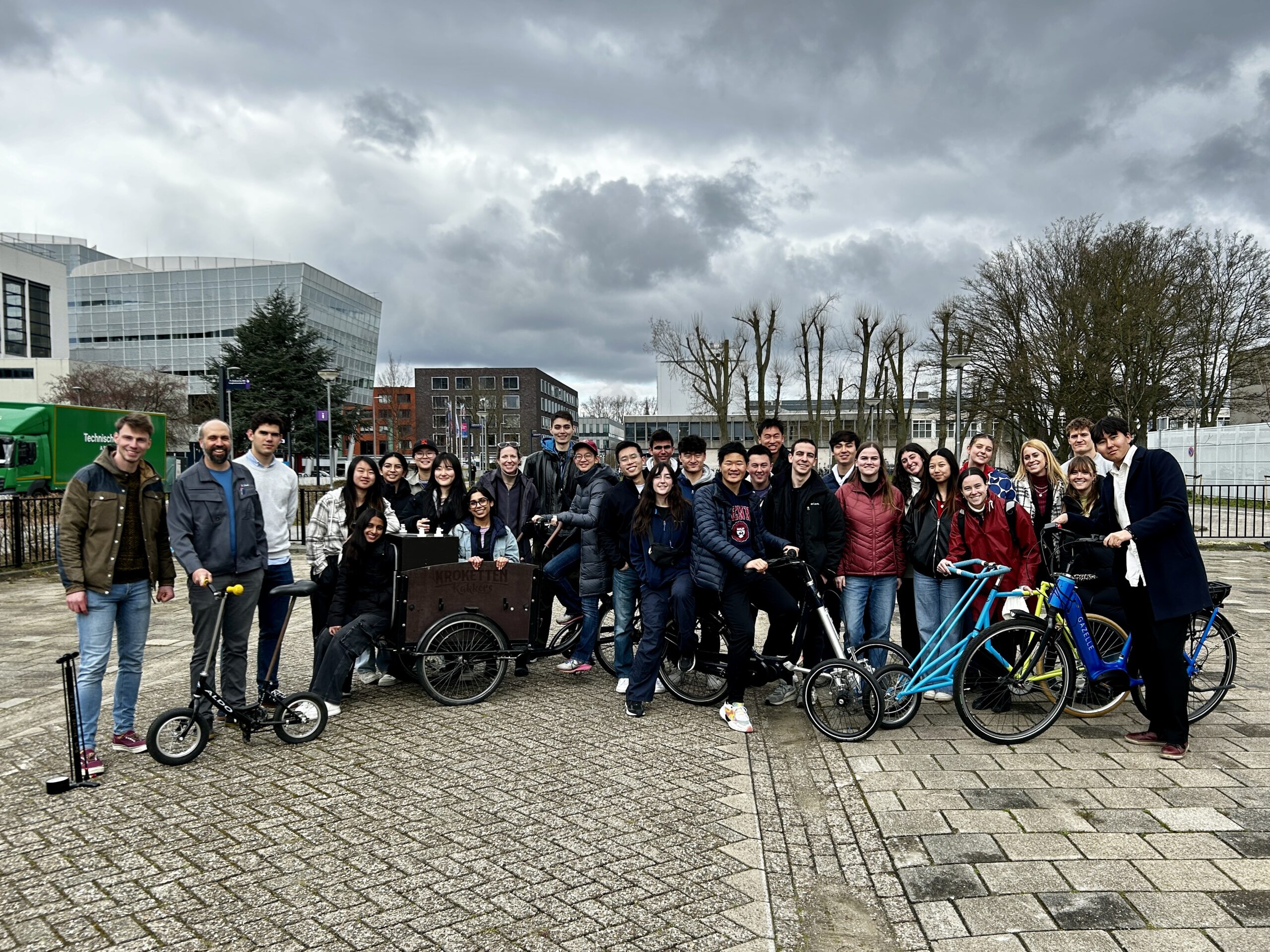
What struck me was not just how vast the cycling infrastructure was, but how intuitive it felt. From wide lanes paved in recognizable red asphalt to bike-specific traffic signals and grade-separated intersections, it was clear that the city prioritized people over cars. Even as outsiders, we could navigate confidently, once we got used to checking for bikes in both directions before crossing, that is.
A Tale of Two Cities
While Amsterdam revealed how cycling can transform a dense urban capital, Delft offered a glimpse into how the same principles work at a smaller scale. Quieter and more intimate, Delft felt like a living case study in people-centered design. Streets were calm, intersections invited subtle, non-verbal communication, and cars took a clear back seat.
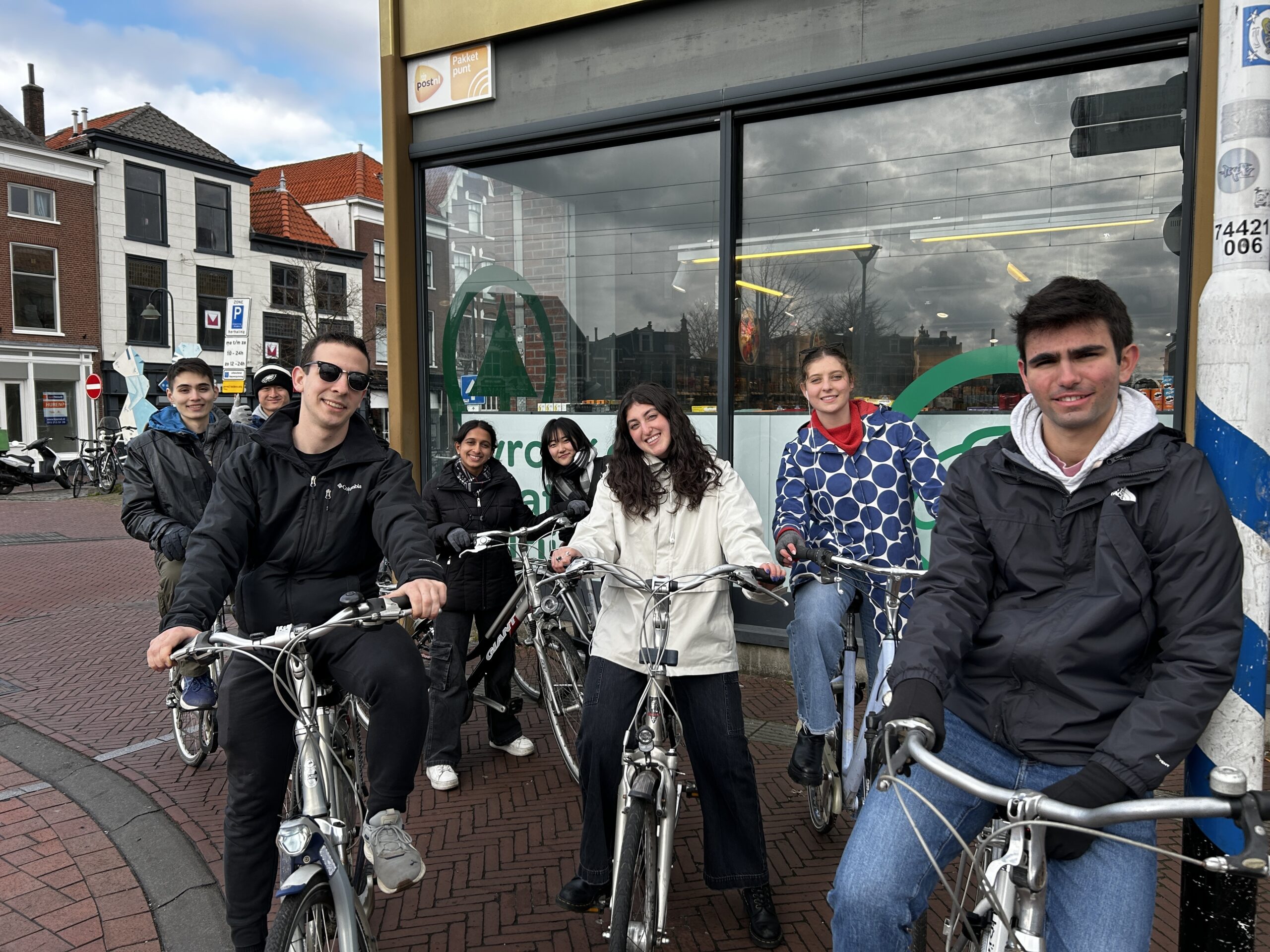
At TU Delft, we explored the Industrial Design campus and met with Dr. Jason Moore. His research centers on bicycle dynamics, safety, and hands-free riding pushed our understanding of what makes a bike stable. We also conducted a life cycle assessment (LCA) of bicycle materials, examining the trade-offs between performance and sustainability, and the broader environmental impact of how bikes are manufactured.
Delft was also where we encountered the countryside. A scenic ride through farmland and along canals revealed the elegance of uninterrupted infrastructure. No noise, no clutter, just smooth paths and open space. On another day, a few of us ran from Delft to The Hague, unintentionally experiencing the intercity network for ourselves. The route followed a canal and tram line, with no roadways or cars in sight. Just open paths meant for people.
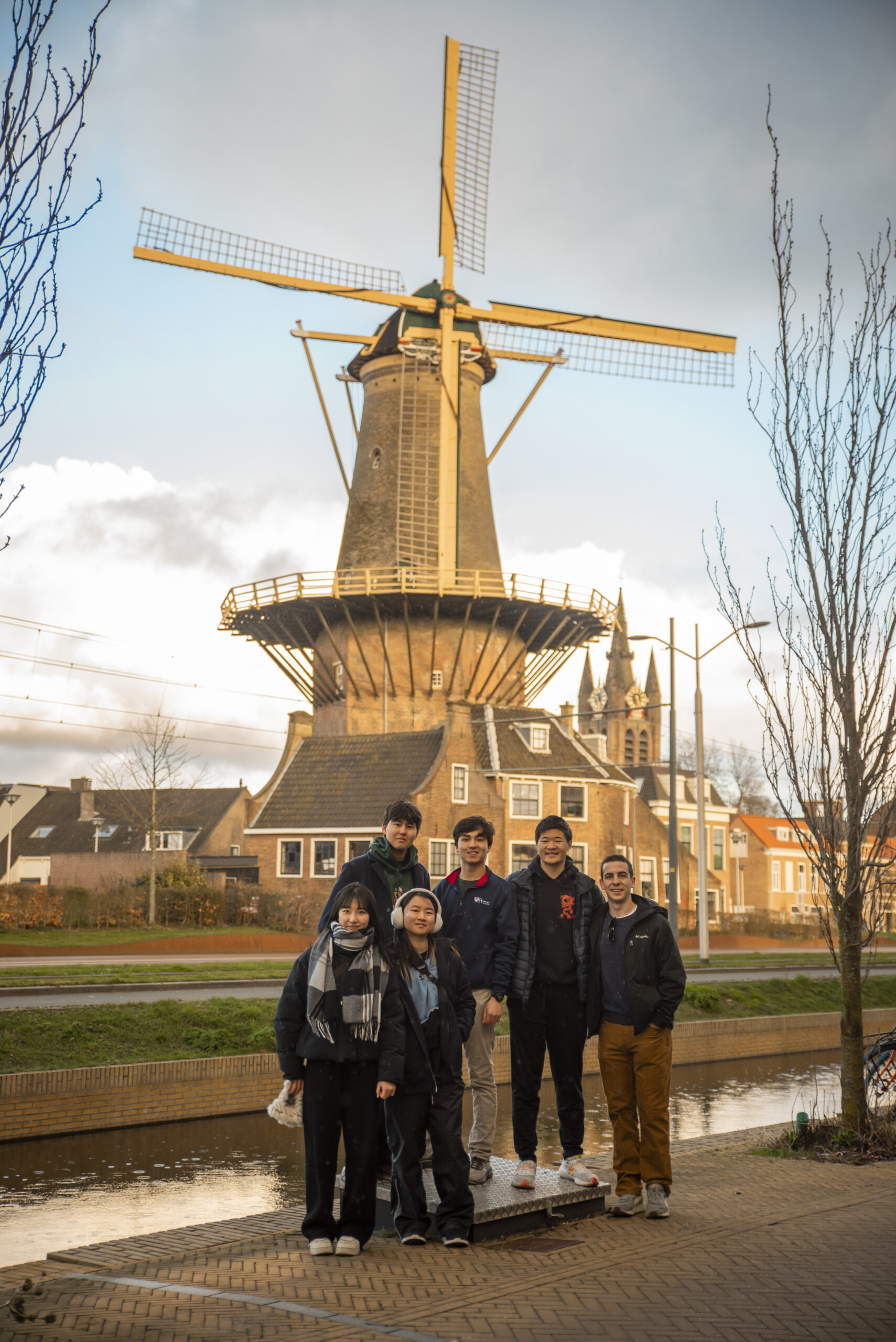
Planning with Purpose
If Amsterdam was where we saw cycling infrastructure at its peak, and Delft where we saw its adaptability, then Maeslantkering (the Netherlands’ massive storm surge barrier) was where we saw the bigger picture.
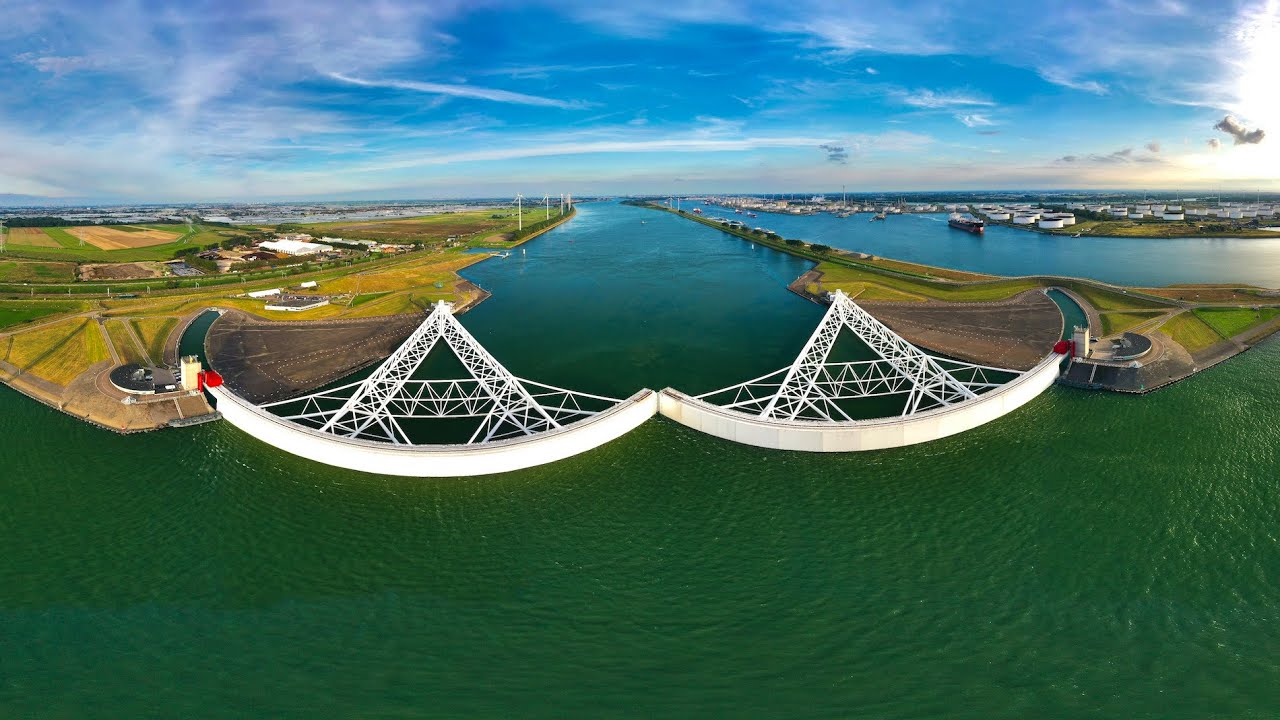
The engineering on display at Maeslantkering was revealing. This wasn’t infrastructure built in response to disaster; it was built in anticipation of one. It captured something essential about Dutch philosophy: a belief in designing for the future, not just reacting to the present. That same mindset shapes their cycling infrastructure, urban planning, and environmental policy.
It made me think about how infrastructure is more than just functional; it’s cultural. It reflects what a society values. The Netherlands values collective well-being, sustainability, and accessibility. You feel it when cars yield without complaint, when bike paths are smooth and safe, when people bike without helmets because they don’t need them.
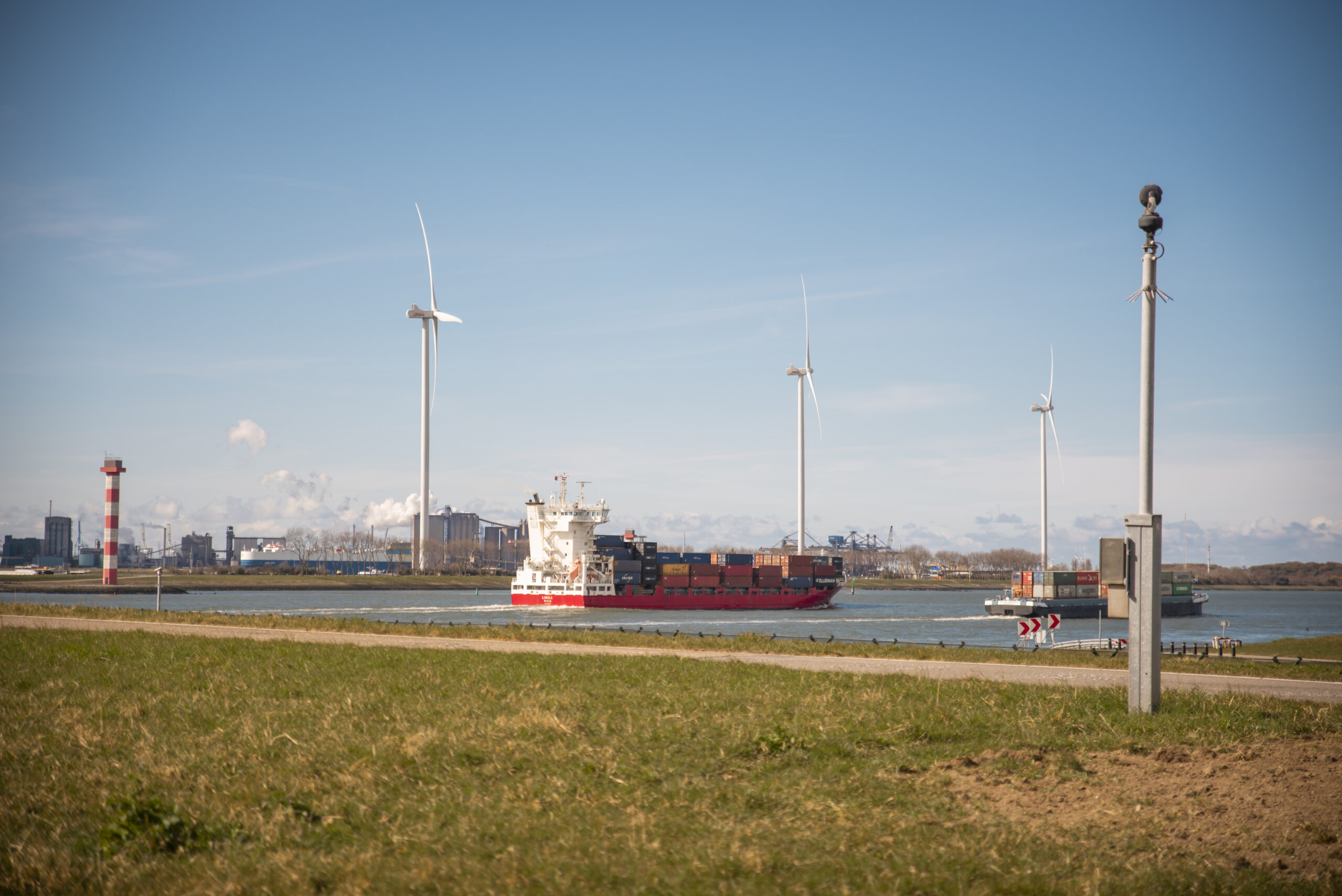
And yes, while our group (myself included) couldn’t help but draw comparisons to the US, we also started to ask better questions: What does meaningful change look like? Who is our infrastructure really for? And how do we design systems that reflect our values?
Final Thoughts
This trip was about bikes, but really, it was about the bigger systems they move through. It was about slowing down and seeing what’s possible when a country builds with intention. It reminded me that thoughtful design, whether of a bike, a street, or a policy, can quietly shape how we live together.
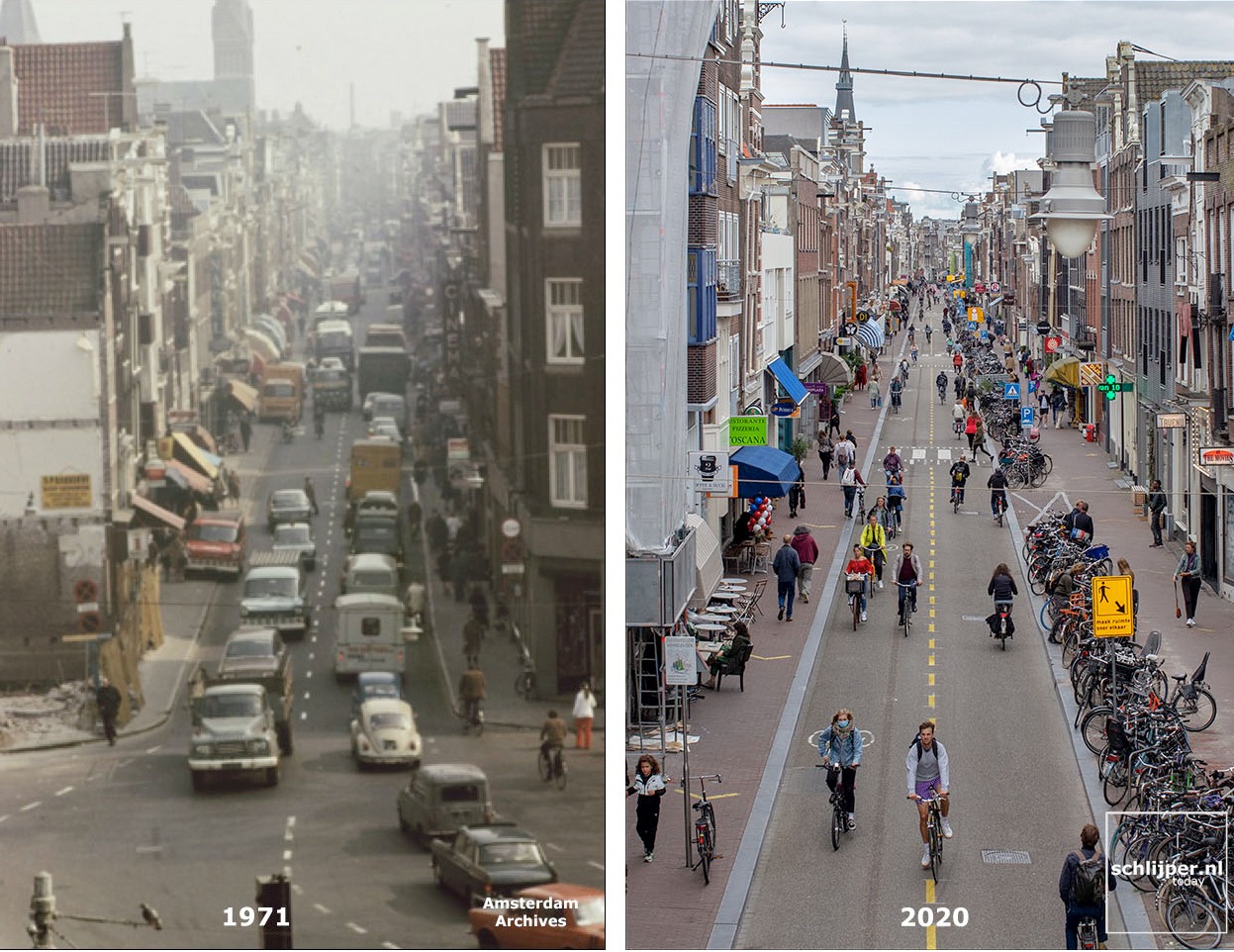
What makes the Netherlands even more remarkable is that it hasn’t always been this way. In the 1970s, cities like Amsterdam and Delft were just as car-dominated as many American cities are today. But through citizen-led advocacy and a government willing to listen, the country made a collective decision to redesign its streets and, in doing so, its future.
Neighborhoods were reimagined, car traffic was limited, and space was deliberately given back to people. What followed wasn’t just a shift in transportation; it was a transformation in how communities connect, move, and thrive.
That story makes the present-day cycling utopia feel less like a miracle and more like a blueprint. It shows that change is possible—not overnight, and not without compromise, but achievable when public will and policy align.
And that’s the biggest takeaway of all. Sometimes, the smallest things, like a red bike lane or a hand signal from a stranger, carry the weight of decades of thoughtful planning. They remind us that better systems aren’t just worth dreaming about. They’re worth building.

Read Related Blogs

What the Wind Knows: Notes from the Steppe
PGS: Mongolian Civilization: Nomadic and Sedentary Will, one of the Penn Global Seminar Correspondents, shares his experience abroad during the May 2025 travel period. Follow along with the group of correspondents on our blog and…
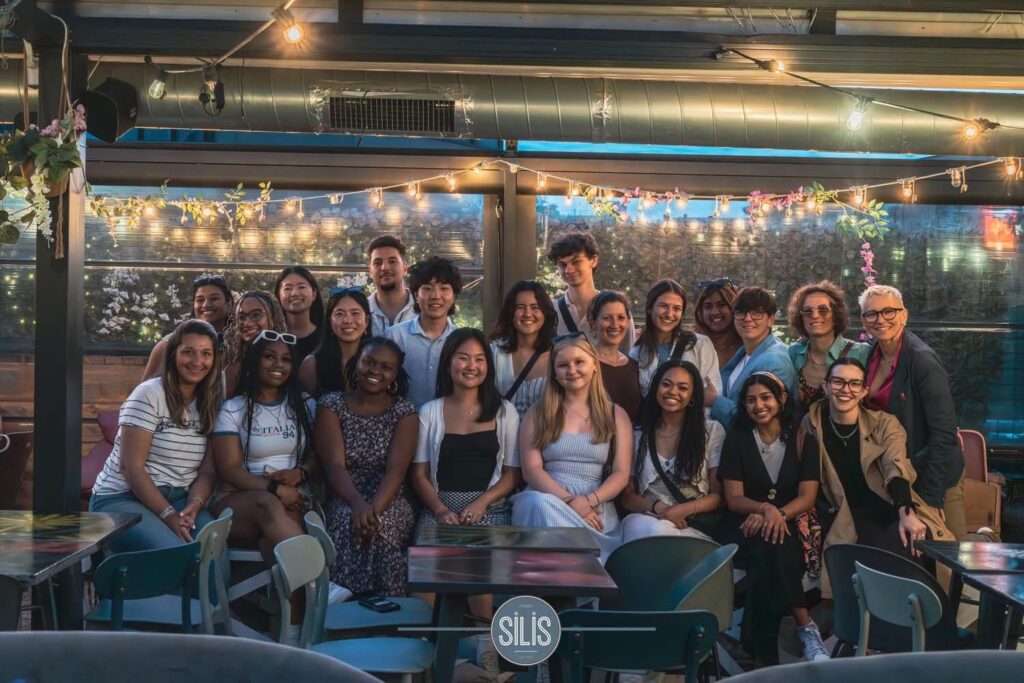
A Thank You Letter to Penn and the World
PGS: Disability Rights and Oppression: Experiences within Global Deaf Communities Tasmiah, one of the Penn Global Seminar Correspondents, shares her experience abroad during the May 2025 travel period. Follow along with…

In the Absence of Certainty
PGS: Rivalry, Competition and International Security in Northeast Asia Lala, one of the Penn Global Seminar Correspondents, shares her experience abroad during the May 2025 travel period. Follow along with the…